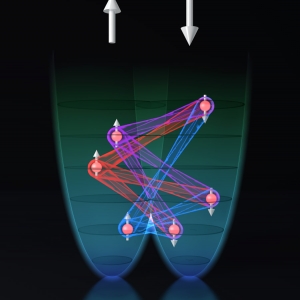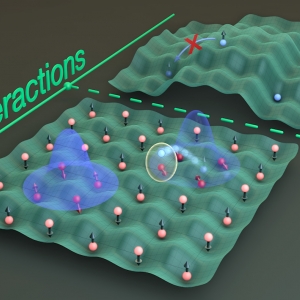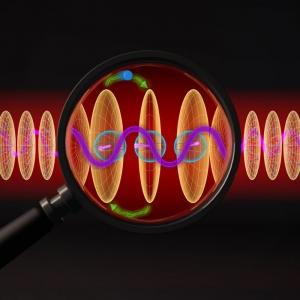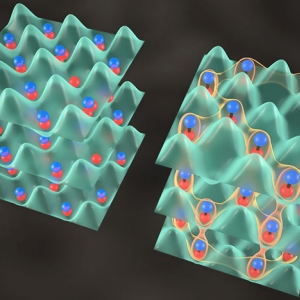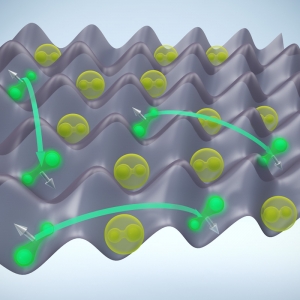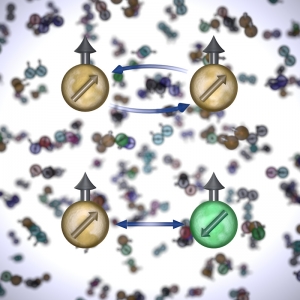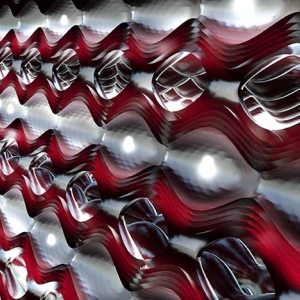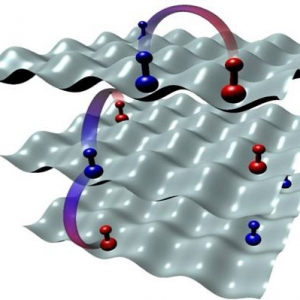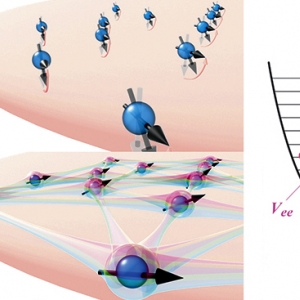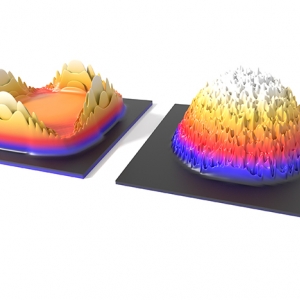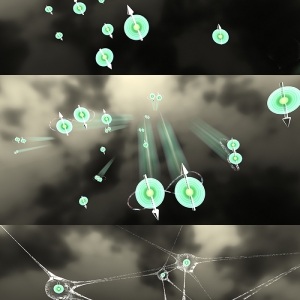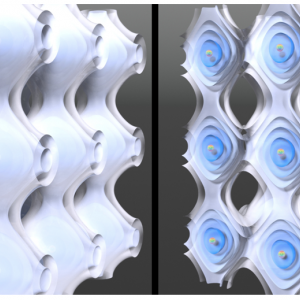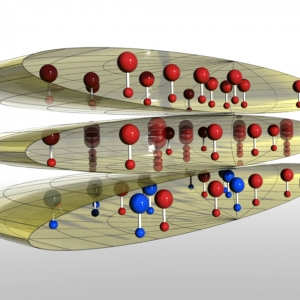Research Highlights
Atomic & Molecular Physics
Going Viral: The Source of a Spin-Flip Epidemic
Published:
PI: Ana Maria Rey
Atomic & Molecular Physics
The Ultramodern Molecule Factory: I. Doublons
Published:
PI: Ana Maria Rey | PI: Deborah Jin | PI: Jun Ye
Atomic & Molecular Physics | Precision Measurement
Quantum Baseball
Published:
PI: Ana Maria Rey | PI: Jun Ye
Atomic & Molecular Physics | Quantum Information Science & Technology
Creative Adventures in Coupling
Published:
PI: Ana Maria Rey | PI: Jun Ye
Atomic & Molecular Physics
A Thousand Splendid Pairs
Published:
PI: Ana Maria Rey | PI: Deborah Jin | PI: Jun Ye
Atomic & Molecular Physics | Quantum Information Science & Technology
Natural Born Entanglers
Published:
PI: Ana Maria Rey | PI: Cindy Regal
Atomic & Molecular Physics | Quantum Information Science & Technology
Terms of Entanglement
Published:
PI: Ana Maria Rey
Atomic & Molecular Physics
Atoms, Atoms, Frozen Tight in the Crystals of the Light, What Immortal Hand or Eye Could Frame Thy Fearful Symmetry?
Published:
PI: Ana Maria Rey | PI: Jun Ye
Atomic & Molecular Physics
Dealing with Loss
Published:
PI: Ana Maria Rey | PI: Deborah Jin | PI: Jun Ye | PI: Murray Holland
Atomic & Molecular Physics
The Great Spin Swap
Published:
PI: Ana Maria Rey | PI: Deborah Jin | PI: Jun Ye
Quantum Information Science & Technology
The Magnificent Quantum Laboratory
Published:
PI: Ana Maria Rey | PI: Jun Ye
Atomic & Molecular Physics
Physicists on the Verge of Mean-Field Breakdown
Published:
PI: Ana Maria Rey
Atomic & Molecular Physics
The Entanglement Tango
Published:
PI: Ana Maria Rey | PI: James Thompson
Quantum Information Science & Technology
New Flavors of Quantum Magnetism
Published:
PI: Ana Maria Rey
Atomic & Molecular Physics
No free lunch for entangled particles
Published:
PI: Ana Maria Rey
Atomic & Molecular Physics
Ultracold Polar Molecules to the Rescue!
Published:
PI: Ana Maria Rey | PI: Jun Ye




